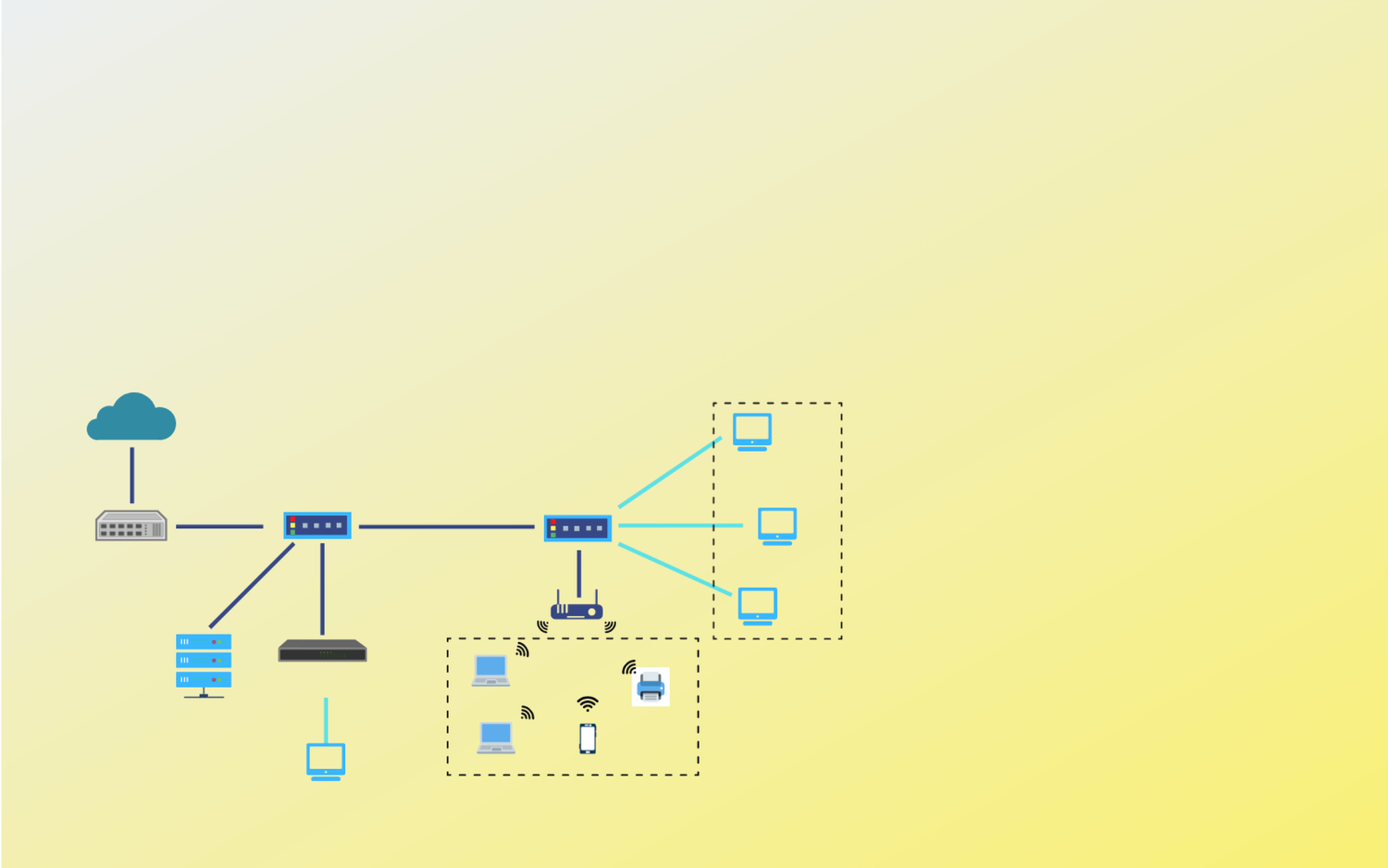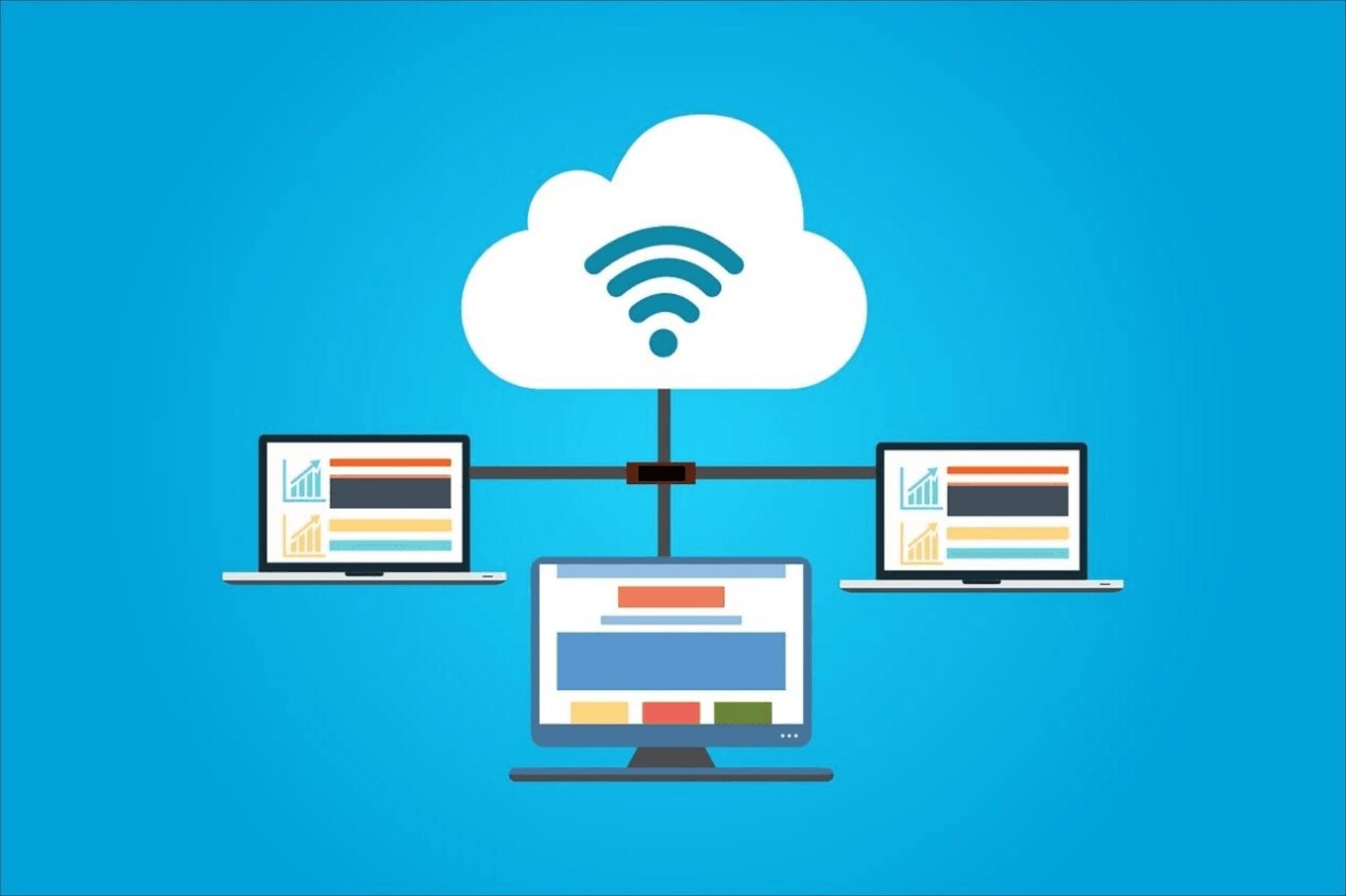Introduction
Welcome to our comprehensive guide on how to capture HTTP traffic using Wireshark on VMware Workstation. As a skilled SEO writer, I will walk you through the process step by step, ensuring that you have all the necessary information to capture and analyze HTTP traffic effectively.
When it comes to network troubleshooting, monitoring network traffic is crucial. Wireshark, a powerful open-source network protocol analyzer, allows you to capture and analyze network packets in real-time. By capturing HTTP traffic, you can gain valuable insights into the communication between web servers and clients, which can be helpful in diagnosing performance issues, security vulnerabilities, or even understanding the functionality of web applications.
In this guide, we will focus on capturing HTTP traffic within a VMware Workstation environment. VMware Workstation is a virtualization software that enables the creation and management of multiple virtual machines on a single physical machine. By using Wireshark within VMware Workstation, you can capture network traffic in a virtualized network environment, whether for testing, development, or troubleshooting purposes.
By the end of this guide, you will have a clear understanding of how to set up VMware Workstation, install Wireshark, configure the network adapter, capture HTTP traffic using Wireshark, and analyze the captured traffic. Additionally, we will address common troubleshooting issues that you may encounter along the way.
So, if you’re ready to dive into the world of HTTP traffic analysis and gain valuable insights into your network, let’s get started with setting up VMware Workstation!
Setting up a VMware Workstation
Before we can begin capturing HTTP traffic using Wireshark, we need to ensure that VMware Workstation is properly set up on your computer. Follow these steps to get started:
- Download and Install VMware Workstation: Visit the official VMware website and download the latest version of VMware Workstation. Once downloaded, run the installer and follow the on-screen instructions to complete the installation process.
- Create a Virtual Machine (VM): Launch VMware Workstation and click on the “Create a New Virtual Machine” option. Here, you can choose to install an operating system from a disc or an image file. Follow the prompts to set the desired configuration for your virtual machine, such as memory, CPU, and network settings.
- Configure Network Adapter: Within the virtual machine settings, go to the “Network Adapter” section. Ensure that the network adapter is set to “Bridged” mode, as this allows the virtual machine to access the host machine’s network adapter directly. This is necessary for capturing network traffic.
- Start the Virtual Machine: Once the virtual machine is configured, click on the “Power on this virtual machine” button to start it.
- Install the Operating System: Follow the installation process for your chosen operating system within the virtual machine. Once the installation is complete, make sure that the virtual machine has internet connectivity by opening a web browser and navigating to a website.
Congratulations! You have successfully set up VMware Workstation on your computer and created a virtual machine. In the next section, we will install Wireshark, the tool we will be using to capture HTTP traffic within the VMware Workstation environment.
Installing Wireshark
Now that you have VMware Workstation set up, the next step is to install Wireshark, which will allow us to capture HTTP traffic within the virtual machine. Follow these steps to install Wireshark:
- Download Wireshark: Visit the official Wireshark website and download the appropriate version of Wireshark for your operating system.
- Run the Installer: Once the download is complete, run the installer and follow the on-screen instructions.
- Select Components: During the installation process, you will be prompted to select optional components for installation. These components provide additional features and functionality. Choose the components based on your needs, or you can stick with the default selection.
- Install WinPcap (Windows Only): If you are installing Wireshark on a Windows machine, you may be prompted to install WinPcap, a library used to capture network traffic. Follow the prompts to install WinPcap if necessary.
- Enable USBPcap (Optional): If you want to capture USB traffic alongside network traffic, you can choose to enable USBPcap during the Wireshark installation process. This is particularly useful if you are working with USB devices within your virtual machine.
- Complete the Installation: Once all the necessary components have been installed, click on the “Finish” button to complete the installation process.
Wireshark is now successfully installed on your computer. In the next section, we will explore how to configure the network adapter within VMware Workstation to capture network traffic.
Configuring the Network Adapter
In order to capture HTTP traffic within the virtual machine using Wireshark, we need to configure the network adapter settings within VMware Workstation. Follow these steps to configure the network adapter:
- Open VMware Workstation: Launch VMware Workstation and select the virtual machine you want to configure.
- Go to Virtual Machine Settings: With the virtual machine selected, click on “Edit virtual machine settings” to access the settings menu.
- Select the Network Adapter: In the settings menu, locate the “Network Adapter” option, which represents the virtual network interface of the virtual machine.
- Choose Bridged Mode: Within the Network Adapter settings, select “Bridged” mode. This mode allows the virtual machine to utilize the host machine’s network adapter directly, enabling the capture of network traffic.
- Apply the Settings: Click on the “OK” button to save the changes and close the settings menu.
By configuring the network adapter to use Bridged mode, the virtual machine will have direct access to the host’s network interface, allowing it to capture network traffic using Wireshark.
In the next section, we will dive into the process of capturing HTTP traffic using Wireshark within the VMware Workstation environment.
Capturing HTTP Traffic with Wireshark
With VMware Workstation set up and the network adapter configured, we can now focus on capturing HTTP traffic using Wireshark. Follow these steps to capture HTTP traffic:
- Start the Virtual Machine: Launch VMware Workstation and power on the virtual machine in which you want to capture HTTP traffic.
- Open Wireshark: Within the virtual machine, open the Wireshark application. It may require administrative privileges to capture live network traffic, so make sure to run it as an administrator if needed.
- Select the Network Adapter: In the Wireshark interface, you will see a list of available network adapters. Select the network adapter that corresponds to your network connection within the virtual machine.
- Start Capturing Traffic: Click on the “Start” or “Capture” button in Wireshark to begin capturing network traffic. By default, Wireshark captures all traffic on the selected network adapter.
- Filter for HTTP Traffic: To focus specifically on HTTP traffic, you can use a Wireshark display filter. In the filter bar, enter “http” and press Enter. Wireshark will now only display HTTP-related packets.
- Interact with Web Applications: Within the virtual machine, interact with web applications or access websites to generate HTTP traffic. Wireshark will capture and display the corresponding packets in real-time.
- Stop Capturing Traffic: When you have captured enough HTTP traffic or have encountered the specific issue you were troubleshooting, click on the “Stop” or “Capture” button in Wireshark to stop capturing network traffic.
Now that you have successfully captured HTTP traffic using Wireshark within the VMware Workstation environment, in the next section we will explore how to analyze the captured traffic for insights and troubleshooting.
Analyzing the Captured Traffic
Once you have captured HTTP traffic using Wireshark within the VMware Workstation environment, it’s time to analyze the captured packets to gain valuable insights and troubleshoot network issues. Follow these steps to analyze the captured traffic:
- Filter for HTTP Traffic: In the Wireshark interface, ensure that you have applied the display filter for HTTP traffic (“http”). This will narrow down the packets displayed to only those related to HTTP communication.
- Review Packet Summary: Wireshark provides a packet summary view, which gives you an overview of each captured packet. This includes information such as source and destination IP addresses, ports, protocols, and packet length. Scan through the packet summary to get a high-level understanding of the captured traffic.
- Inspect Packet Details: By selecting a specific packet in Wireshark, you can inspect the detailed information contained within it. This includes the layer-by-layer breakdown of the packet, enabling you to analyze headers, payloads, and other network protocol specifics.
- Follow TCP Streams: If you are troubleshooting an HTTP-related issue, Wireshark allows you to follow TCP streams. This feature aggregates all packets belonging to a particular TCP stream, allowing you to analyze the complete HTTP conversation between the client and server.
- Identify Error Codes or Performance Issues: Examine the captured HTTP traffic for error codes (such as 404 or 500) or indications of performance issues. Look for long response times, large response sizes, or repeated requests that could be impacting the network or web application’s performance.
- Use Wireshark Statistics: Wireshark provides various built-in statistics tools that help you analyze the captured traffic. These tools include endpoint statistics, conversation statistics, protocol hierarchy statistics, and many more. Utilize these statistics to gain further insights into the network behavior and performance.
- Save and Export Capture Files: If needed, you can save the captured traffic as a Wireshark capture file (.pcap) for future analysis or sharing with colleagues. Additionally, you can export specific packets or filtered results to different file formats for further investigation.
By carefully analyzing the captured HTTP traffic using Wireshark, you can identify any potential issues, understand the communication patterns between the client and server, and make informed decisions to optimize the network or web application performance.
In the next section, we will cover common troubleshooting steps and address any common issues you may encounter while capturing and analyzing HTTP traffic using Wireshark within the VMware Workstation environment.
Troubleshooting and Common Issues
While capturing and analyzing HTTP traffic using Wireshark within the VMware Workstation environment, you may encounter a few common issues. Here are some troubleshooting steps to help you overcome these issues:
- No Captured Packets: If you’re not seeing any captured packets in Wireshark, ensure that the network adapter within VMware Workstation is set to “Bridged” mode and that the virtual machine has network connectivity. Additionally, check if any firewall settings are blocking the traffic.
- Incorrect Network Adapter: If you’re not capturing the desired HTTP traffic, double-check that you have selected the correct network adapter in Wireshark. It should match the network adapter used in the virtual machine within VMware Workstation.
- Missing HTTP Packets: If some HTTP packets seem to be missing from the capture, it could be due to filtering settings in Wireshark. Check if any display filters are applied that may exclude certain HTTP packets. Make sure to clear any filters or adjust them to capture the required packets.
- High Traffic Volume: Analyzing a large volume of network traffic can be overwhelming and resource-intensive. If Wireshark becomes slow or unresponsive, consider applying display filters to focus on specific HTTP conversations or change the time interval for capturing to limit the number of packets.
- Encrypted Traffic: Wireshark captures packets in their raw form, which means it may not be able to decrypt encrypted traffic like HTTPS. In such cases, you may only be able to see metadata information like server names and port numbers. To capture and analyze encrypted traffic, additional steps and tools are required.
- Integrating with Other Tools: Wireshark is a powerful standalone tool, but it can be even more effective when used in conjunction with other network analysis tools. Explore options to export captured packets or integrate Wireshark with tools like Wireshark dissector plugins or network analyzers for a more comprehensive analysis.
By following these troubleshooting steps and being aware of common issues, you can overcome obstacles and successfully capture and analyze HTTP traffic using Wireshark within the VMware Workstation environment.
Now that you have the knowledge and tools to capture and analyze HTTP traffic, you can gain valuable insights into your network, identify performance issues, and ensure the smooth functioning of your web applications.
Conclusion
Capturing HTTP traffic using Wireshark within the VMware Workstation environment can provide valuable insights into the communication between web servers and clients. Throughout this guide, we have covered the essential steps to set up VMware Workstation, install Wireshark, configure the network adapter, capture HTTP traffic, and analyze the captured packets.
By setting up VMware Workstation correctly, you create a virtualized network environment where you can capture network traffic in a controlled and isolated environment. Installing Wireshark ensures that you have a powerful tool at your disposal to capture and analyze the captured packets.
Configuring the network adapter within VMware Workstation to use Bridged mode allows the virtual machine to access the host machine’s network adapter directly, enabling the capture of network traffic. From there, you can use Wireshark to capture HTTP traffic, filter for specific packets of interest, analyze packet details, and use various statistics tools to gain insights into network behavior.
Throughout the process, we have also addressed common troubleshooting steps and issues that may arise while capturing HTTP traffic. By following these troubleshooting steps, you can overcome obstacles and ensure a successful capture and analysis process.
By leveraging Wireshark’s capabilities and analyzing the captured HTTP traffic, you can diagnose performance issues, identify security vulnerabilities, understand the functionality of web applications, and optimize your network for better performance.
Now armed with the knowledge and skills to capture and analyze HTTP traffic using Wireshark and VMware Workstation, you are equipped to enhance your network monitoring and troubleshooting capabilities. So, put this knowledge into practice and embark on a journey of capturing and analyzing HTTP traffic to uncover invaluable insights.

























